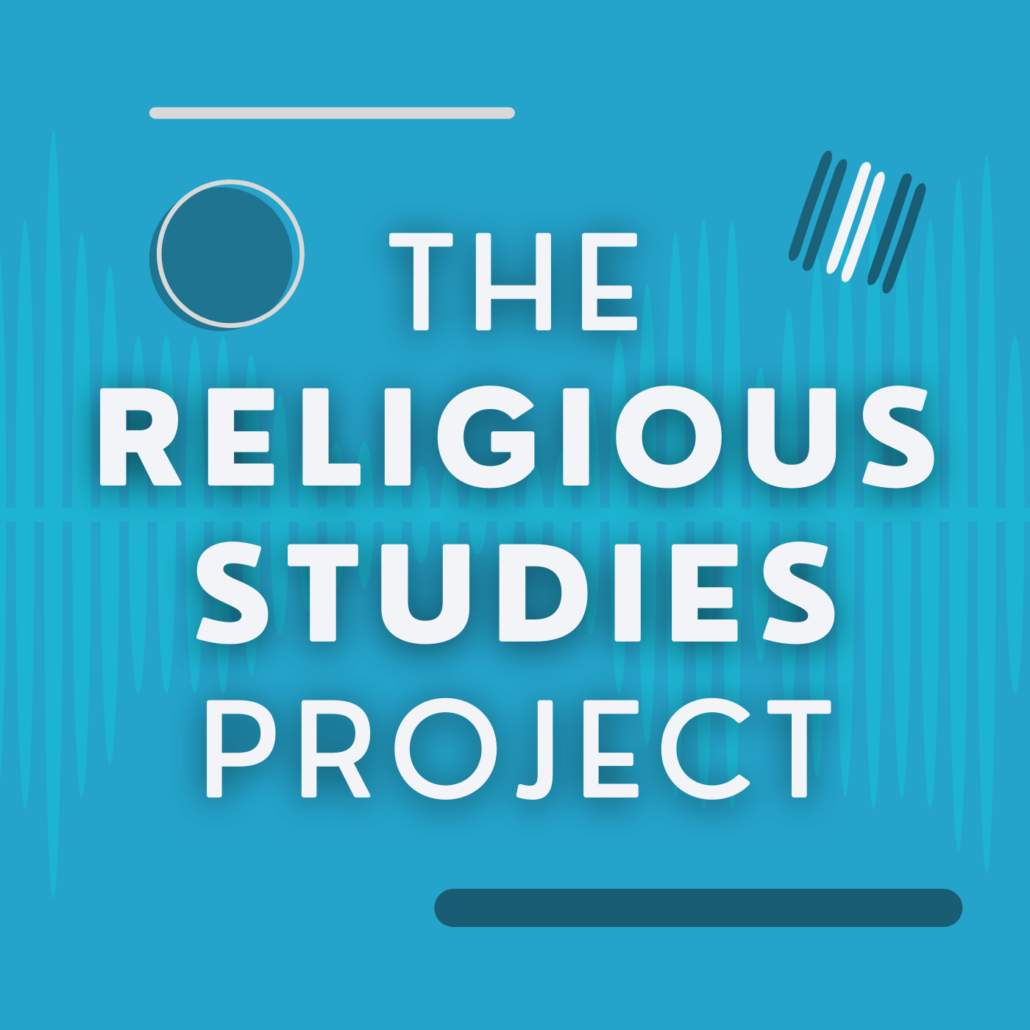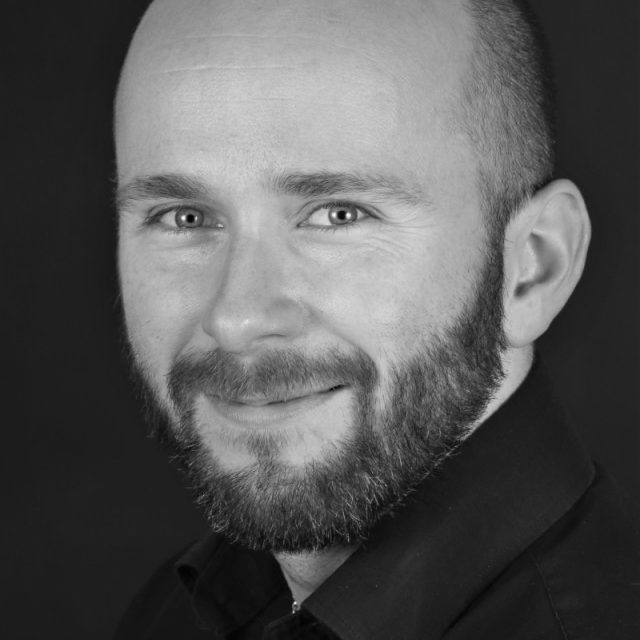By Christopher R. Cotter, in response to an interview with Chris Silver on “Atheism, New Religious Movements, and Cultural Tension”.
Listening to Chris Silver’s recent podcast on Atheism, New Religious Movements, and Cultural Tension was a thoroughly pleasant experience. I enjoyed hearing a colleague who I first met in 2011, and who quickly came on board the nascent RSP team (as interviewer, editor, writer, and more), taking his well-earned place on the ‘other’ side of the microphone. Like Chris, I recognize the problems associated with treating atheists, agnostics, ‘nones’, etc., as distinct groups with coherent attitudinal correspondences. I’ve also used grounded theory and social constructionism in my approach to ‘non-religion’ and recognize the issue of one’s work being taken out of context. I welcomed hearing of broad-ranging, quantitative work being carried out within the psychology of religion with an eye to debates in the broader, critical study of religion, and the new developments in his work relating to status loss, New Religious Movements, and more.
Despite the many positives of the approach outlined by Silver, critical problems with it—exemplified in my own work, too—concern the construction of ideal types, and the proliferation of idiosyncratic terminology. In what follows, I’ll discuss each of these issues in turn before proposing a discursive solution.
Ideal Types
Referring to the ‘insubstantial’ secular, Lois Lee pithily observes that ‘it is not possible to organize absence into types’ (2015, 51). However, this isn’t the case with substantive understandings of ‘non-religion’ and in 2011 I set out with similar ambitions to Silver, producing a typology of non-religion in my Masters dissertation (Cotter 2011, 2015). This project was conducted amongst the undergraduate student body of the University of Edinburgh taking a grounded theoretical approach which elicited narratives via electronic questionnaires and qualitative interviews. Two of the key insights suggested were that:
- The ways in which students negotiated (non-)religious terminology throughout their narratives allowed the development of five ideal types which were seemingly independent of established religious categories: naturalistic, humanistic, philosophical, familial, and spiritual.
- Regardless of the salience of the students’ (non-)religious identifications, they appeared to be keenly aware of where they stood when religion or non-religion were perceived to interact with what mattered to them
A significant reason I have felt unease with these insights as they stand is my somewhat lofty and obfuscating attempt to provide an exhaustive ideal-typical account of non-religion.
Ideal Types are commonly understood as ‘analytical tools to be used to facilitate comparison’ (Barker 2010, 188 fn. 2), as ‘pragmatic constructs’ which can in no way ‘be regarded as essential categories or ontological realities’ (Cox 2006, 83). Recent relevant examples would be Lois Lee’s five types of ‘existential culture’ (2015, 161–72), John Gray’s Seven Types of Atheism (2018), Silver and colleagues’ ‘six types of non-belief’ (Silver et al. 2014), or my own five-fold typology of ‘non-religion’. Even when writing my dissertation, I was clearly uneasy concerning the correlation between these types and my data:
“These narrative-based types cannot be assumed to be constant, and must be understood as firmly rooted in the context in which they were revealed. However, they reflect what individuals actually say, and give priority to individual self-representations, providing a much ‘truer’ representation of what (non)religion means to these individuals than wide-ranging, quantitative, typologies which suffer from the same contextual constraints.” (2011, 76)
Although I, and most others who employ ideal types, have never claimed that classifying individuals is a simple matter, and have emphasized that there is much overlap between types, it is almost invariably the case that their artificial and constructed nature becomes lost in translation (see Silver’s comments about misrepresentations of his work in the media), giving the false impression that individuals can be easily boxed off into discrete types. Whilst such work is valuable for macro-level analysis, it fundamentally breaks down at the level of the individual where heterogeneity and contextuality abound: there is ‘no such thing as a perfect or ideal-typical form’ of difference to ‘religion’ (Lee 2015, 44).
‘Religious, spiritual, secular, and non-religious identities are not stable, unitary formations’ (Hoesly 2015), but rather what Jean-François Bayart refers to as ‘operational acts of identification’ (2005, 92). However, in relation to the study of ‘Atheism’, Ethan Quillen argues that prevalent ideal-typical generalizations are perhaps ‘nothing more than a product of the current scholarly study of Atheism’s predominant focus on the social-scientific attempt at making sense of “Atheism-in-general,” rather than “Atheism-in-specific”’ (2015a, 30), the ‘attempt at finding an identity in the numerous applications of an ambiguous word’ (Baird 1991, 11).
Semantic Anarchy
Going further, these problems are clearly connected to issues surrounding terminology. The contemporary situation has been described as verging on ‘a situation of semantic anarchy, in which individual scholars work with idiosyncratic definitions’ (Jong 2015, 19). Indeed, Quillen argues that the whole discourse on ‘types of atheism’, or indeed the very terminology of ‘ir-religion,’ ‘un-belief,’ ‘non-religion’, etc., is ‘not unlike that which complicates the definition of “religion”’ (2015b, 132), and falls foul of much of the critique levelled at the term (see RSP podcasts with Timothy Fitzgerald, Russell McCutcheon, James Cox, Brent Nongbri, Teemu Taira and others). In addition, ‘The conceptual balkanisation that results from the proliferation of idiosyncratic definitions makes […] fruitful collaboration more difficult’ between scholars doing empirical work in different contexts (Jong 2015, 19).
We need not despair, though. This situation of proliferating ideal types and idiosyncratic terminology can be remedied by scholars being ‘vigilantly specific about the aspect of “nonreligion” that they are interested in’ (Jong 2015, 20), restricting themselves to very particular contexts—historical, textual, ethnographic, etc. Alternatively, my preferred route is to take a discursive approach.
Discursive Approaches
As I’ve previously argued, we can fruitfully
“conceptualize non-religion as part of a religion-related field comprising ‘all phenomena that are generally (or according to a certain definition of “religion”) considered to be not religious, but stand in a determinable and relevant relationship to the religious field.’ This relationship can take the form of criticism, competition, collaboration, mirroring, functional equivalence, interest, etc. Such an understanding sees […] ‘descriptions, claims, reports, allegations, and assertions’ about non-/religion [as] the topic of the analysis, rather than ‘religion’ or ‘non-religion’ themselves. Thus, we arrive at a critically-engaged, relational concept of ‘non-religion’ which can be operationalized empirically in a non-stipulative manner and which emphasizes that religion need not be a dominant, normative, or positive term in the contexts studied.”
Although discursive questions were not the driver for my Masters project, it can clearly be interpreted as having focused on the way ‘religion is organized, discussed, and discursively materialized’ (von Stuckrad 2010, 166) in a particular context, by individuals who self-described aspects of their individual practice, beliefs, attitudes and/or identity as different from their subjective self-definitions of religion. It can be viewed as discerning a range of discourses, which could be classified as spiritual, familial, philosophical, humanistic and naturalistic, surrounding a variety of negotiated phenomena—identities, practices, attitudes, beliefs—in a field of discourse with boundaries dictated by the logics of the research project, i.e. substantiating the ‘non-religiosity’ of Edinburgh students, in 2010–11, whose self-descriptions were ‘non-religious’, and so on.
Returning to the two key insights of the project, this discursive re-reading allows them to be reframed as follows:
- In these narratives, these students primarily invoked five types of discourse when they engaged with topics related to religion, non-religion, and related categories. These discourses appeared to operate at a level independent of the specific terminology—the discursive objects—in question.
- Regardless of the salience of these discourses in individuals’ lives, they were invoked when the students were confronted with phenomena that were deemed to be related to—i.e. which meaningfully intersected with—the field of discourse on religion, non-religion, and related categories.
This move from types of atheism/non-religion to types of discourse shifts the focus to ‘the social effects of the way people talk, rather than the apparent meaning of their words’ (Martin 2017, 104). People employ multiple discourses, situationally; they can say things in many different ways, depending on the discursive resources available to them in a particular cultural context.
A shift in focus from the individual to the discourse they employ, from the person to what they say, and how they say it, allows the individual to be incorporated analytically into the wider societal conversation of which they are inherently a part. As Bayart argues, no speech act can be attributed to a single individual, but is a product of the broader complex social situation in which it occurs, as well as its historical context: ‘every utterance is related to earlier utterances’ (2005, 112).
There is much more I could say here, and I’m not claiming that discursive study is the only way to study ‘non-religion’ critically. However, it is one way in which we can usefully sidestep some of the issues associated with the construction of typologies in the social sciences. Whether this helps us to avoid the ‘misinterpretation’ of our work when it takes on a life of its own is another matter. One of many Challenges and Responsibilities for the Public Scholar of Religion.
References
- Baird, Robert D. 1991. Category Formation and the History of Religions. 2nd ed., with A new pref. Religion and Reason 1. Berlin: Mouton de Gruyter.
- Barker, Eileen. 2010. “The Church Without and the God Within: Religiosity and/or Spirituality?” In The Centrality of Religion in Social Life: Essays in Honour of James A. Beckford, edited by Eileen Barker, 187–202. Farnham: Ashgate.
- Bayart, Jean-François. 2005. The Illusion of Cultural Identity. London: C Hurst & Co Publishers Ltd.
- Cotter, Christopher R. 2011. “Toward a Typology of ‘Nonreligion’: A Qualitative Analysis of Everyday Narratives of Scottish University Students.” Unpublished MSc by Research Dissertation, Edinburgh: University of Edinburgh. http://www.academia.edu/1329691/Toward_a_Typology_of_Nonreligion_A_Qualitative_Analysis_of_Everyday_Narratives_of_Scottish_University_Students.
- ———. 2015. “Without God yet Not Without Nuance: A Qualitative Study of Atheism and Non-Religion among Scottish University Students.” In Atheist Identities: Spaces and Social Contexts, edited by Lori G. Beaman and Steven Tomlins, 171–94. Dordrecht: Springer.
- Cox, James L. 2006. A Guide to the Phenomenology of Religion: Key Figures, Formative Influences and Subsequent Debates. London: Continuum.
- Gray, John. 2018. Seven Types of Atheism. London: Allen Lane.
- Hoesly, Dusty. 2015. “‘Need a Minister? How About Your Brother?’: The Universal Life Church between Religion and Non-Religion.” Secularism and Nonreligion4 (1).
- Jong, Jonathan. 2015. “On (Not) Defining (Non)Religion.” Science, Religion and Culture2 (3): 15–24.
- Lee, Lois. 2015. Recognizing the Nonreligious: Reimagining the Secular. Oxford: Oxford University Press.
- Quillen, Ethan G. 2015a. “Discourse Analysis and the Definition of Atheism.” Science, Religion and Culture2 (3): 25–25.
- ———. 2015b. “Everything Is Fiction: An Experimental Study in the Application of Ethnographic Criticism to Modern Atheist Identity.” Unpublished PhD Thesis, Edinburgh: University of Edinburgh.
- Silver, Christopher F., Thomas J. Coleman III, Ralph W. Hood Jr., and Jenny M. Holcombe. 2014. “The Six Types of Nonbelief: A Qualitative and Quantitative Study of Type and Narrative.” Mental Health, Religion & Culture 17 (10): 990–1001.
- Stuckrad, Kocku von. 2010. “Reflections on the Limits of Reflection: An Invitation to the Discursive Study of Religion.” Method & Theory in the Study of Religion 22 (2): 156–69.



